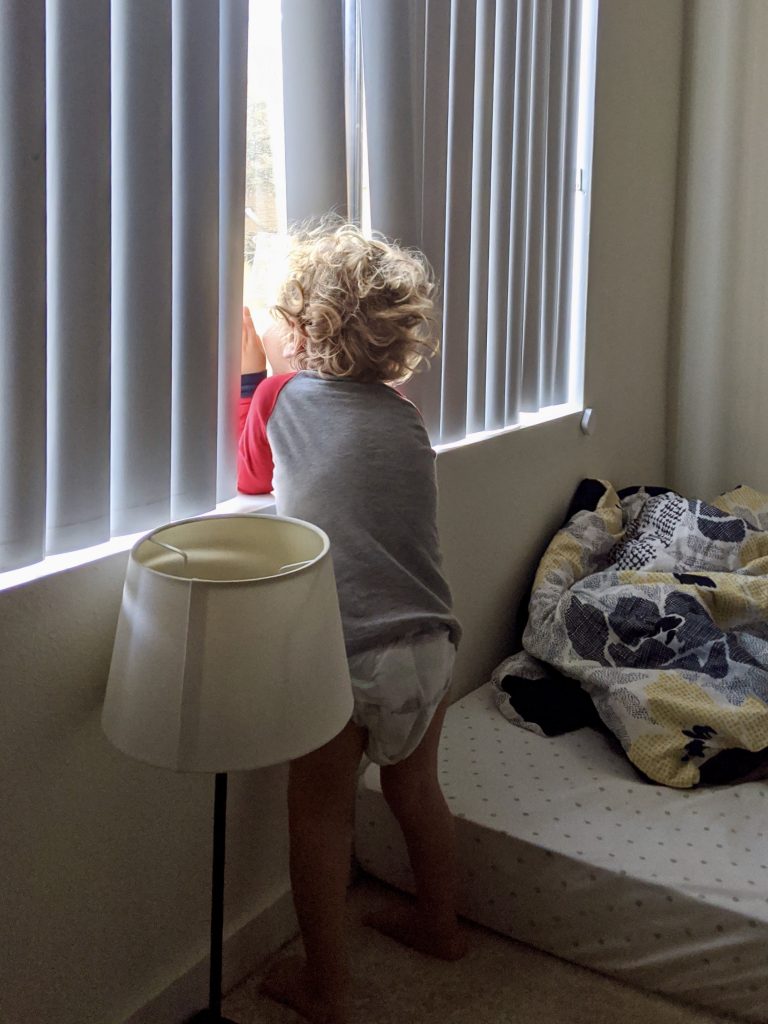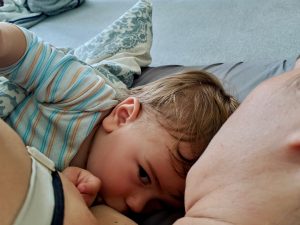Storm’s language has reached a new level. He is putting so many words together. It’s hard to remember that we couldn’t always communicate this well with him, even though it’s not that long ago. In preparing to have a newborn again, I’ve been going back though our photo archives to look at Storm’s baby photos and videos, and I noticed that it’s only about a year ago that he really started producing words. And here we are, now, where he’s using question words, negations, and discourse particles.
One of my favorite things right now is how Storm uses his language resources. He has learned how to use some of the wh-question words in some of his languages. In Danish, he most frequently uses ‘hvor’, ‘where’. That is a very useful word, it gets people to find your stuff for you. I am asked multiple times a day: ‘Hvor my vand henne’ when he wants his water bottle, or ‘Hvor my sut henne’ when the pacifier has disappeared.

Even though Storm has started using first and second person pronouns (exhibit A: ‘I big boy!’, exhibit B: ‘I will NOT pee’, exhibit C: ‘Je ben te groot’ ‘you are too big’), it continues to pose a challenge to get them to be target-like in each language. He does well in English, both with ‘I’ and ‘my’. In Dutch, his use of ‘ik. ‘I’, is still very infrequent, and if it’s followed by ‘will’ which is a cognate of English ‘will‘ then, without fail, he says ‘I will’ followed by something Dutch. In Danish, he mostly gets ‘jeg’, ‘I’ right, now, but sometimes an ‘I’ slips in there. And he always, always says ‘my’ for ‘my’, in all his languages. It’s fine in Dutch, where ‘mijn’ sounds very similar to ‘my’ in many contexts anyway. But in Danish, it sounds like he is code-switching, putting an English word in the middle of a Danish sentence: Hvor er my sut henne?. Trying to teach a language learning child prescriptively about grammar is futile at the best of times, but with first person pronouns such as ‘I’ and ‘my’, you are also up against the weird situational changes that come with words whose meaning depend on who is using them and when and where. I will tell Storm, ‘nej, det hedder MIN sut’, ‘no, it’s (called) MY pacifier’, and he will, understandably refute this statement: ‘nej, MY sut’, ‘ no, MY pacificer’, and you can’t really blame him, since this is accurate in terms of ownership… Presumably, time will solve this one.





